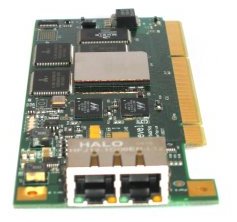Table of Contents
Driver test: large file transfer correctness
Rationale
Downloading a large file via HTTP provides an easy test of the complete transmit and receive datapath under a sustained high packet load. The md5sum and sha1sum commands can be used to verify that a file was downloaded correctly.
Preparation
Create a 512MB file containing pseudo-random data, using e.g.:
dd if=/dev/urandom of=512mb bs=1M count=512
Obtain the MD5 and SHA1 digests of your pseudo-random data file:
md5sum 512mb sha1sum 512mb
Copy your pseudo-random data file to a web server on your local network.
Test sequence
- Before starting, ensure the network cable is connected to a network which provides a DHCP server and a web server which can serve your pseudo-random data file.
- Boot into a version of iPXE with
DIGEST_CMDenabled. - Use ifstat to identify the name of your network interface (hereafter assumed to be
net0). - Open the interface and obtain an IP address using
dhcp net0. - Download the pseudo-random data file using
imgfetch. - Use
md5sumto calculate the MD5 digest of the downloaded file, and verify that this matches the MD5 digest calculated earlier. - Use
sha1sumto calculate the SHA1 digest of the downloaded file, and verify that this matches the SHA1 digest calculated earlier.


